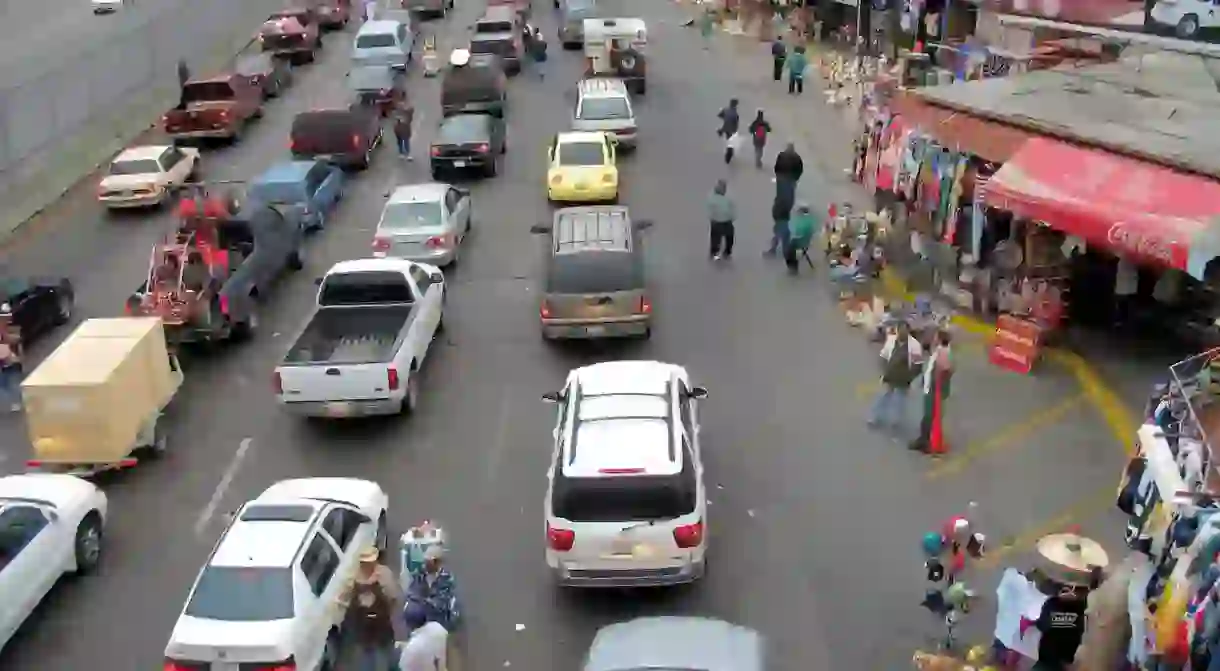San Diego to Tijuana: What to Know Before Crossing the World's Busiest Border by Foot

When we think of the Tijuana border crossing by car or tour bus, only one idea comes to mind: long queues, huge traffic jams and angry-looking policemen. However, crossing the San Ysidro border by foot is a completely different experience, and usually a breeze. As long as you’re prepared, you should be in Mexico within an hour of departing from downtown San Diego.
You can take the San Diego trolley right up to the border
Getting to the San Ysidro border from San Diego couldn’t be easier. From most major trolley stops in downtown, jump on any Imperial Way blue line going south. San Ysidro is at the very end of the line and the trolley ride should take around 45 minutes and cost you a grand total of $2.50 USD (£1.80 GBP) (single tickets can be bought using the self-service machine at any station). From the San Ysidro trolley stop, you’re just a 3-minute walk from the border.

You’ll need valid identification
As with most border crossings, official identification is needed for entry, even if you’re just popping in for a day trip. While some nationalities are allowed to cross with just a photo ID, many (such as the US, UK, Canada and Australia) require a passport that is valid for at least six months. Don’t arrive without it!

You may have to pay a fee
If you’re planning on staying in the country for more than 7 days, you’ll have to buy a tourist card. The card costs $450 pesos ($24 USD) and allows you to stay in Mexico for up to 180 days. If you’re required to pay the fee, you’ll be asked to go to a separate booth where it is possible to pay in cash (pesos or dollars) or credit card. Once you’ve paid, you’ll be given your entry stamp and card. Always ask for a receipt.
It’s unlikely that they’ll ask for onward travel
If you’re travelling around the world and haven’t got your next destination planned yet (or you’re planning to cross into a bordering country by bus and don’t have a ticket yet), don’t worry. It’s very unusual that land borders in Mexico will ask for proof of onward journey. Please note: this does not apply if you’re travelling by air, as this will depend on which airline you’re travelling with. Also, if you’re doing this journey in reverse and crossing from Mexico to the US (and are not a US resident) you will need proof of onward travel.

Avoid Friday afternoons and Sundays
With downtown San Diego being just 20 miles from the border, visitors often opt for crossing into Mexico for a day-trip. This means that weekends can be extremely busy, so, if you can, it’s best to avoid doing this altogether. Having said that, a large percentage of people visit Tijuana by car or with an organised tour; whatever the day, you’ve still got a far better chance of getting through more quickly on foot.

On the Tijuana side, avoid the yellow taxis
When you’re crossing the border by foot, it can feel like you’ve been spat out the other side before you’ve even had time to realise what’s going on—it’s really that quick! However, you’ll have no doubts that you’ve arrived in Mexico: chirpy street vendors will start selling you steaming-hot tamales, mariachis will tune up their guitars and, most commonly, taxi drivers will all be trying to get your attention. If you can, opt for the orange and white taxis. They tend to run on a metre so you know you’re getting a fair price (you shouldn’t be paying more than 100 pesos to get into downtown Tijuana). If you’re not loaded with luggage, another option is to walk, which takes around 30 minutes.













